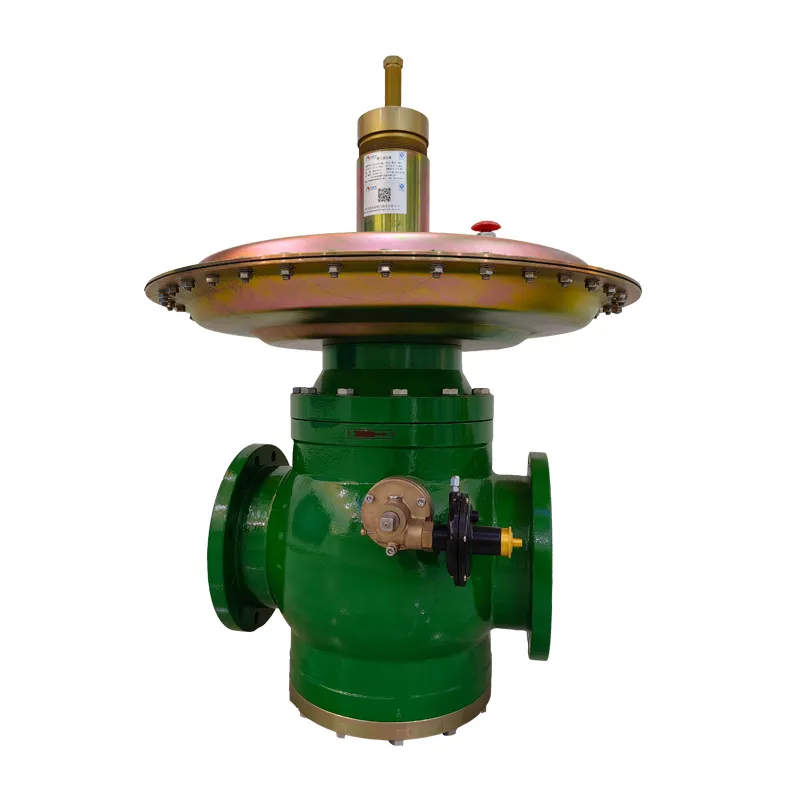
Oct . 16, 2024 11:45
Back to list
Natural Gas Pressure Reduction Station Overview and Importance for Energy Systems
Natural Gas Pressure Reduction Stations An Essential Component of the Energy Infrastructure
Natural gas has become an integral part of the global energy landscape, providing a cleaner alternative to other fossil fuels. As the demand for this energy source continues to grow, so does the need for efficient systems to manage its transportation and delivery. One critical component of this system is the natural gas pressure reduction station (PRD). These stations play a vital role in ensuring that natural gas is delivered safely and effectively to end consumers.
What is a Natural Gas Pressure Reduction Station?
A natural gas pressure reduction station is a facility designed to lower the pressure of natural gas as it moves through pipelines. Gas is transported at high pressures to minimize the volume and enhance efficiency during transit. However, this high pressure is not suitable for domestic or industrial use, where lower pressures are required. Thus, PRDs become necessary to step down the pressure of the gas to a safe and usable level before it enters the distribution network.
Components of a Pressure Reduction Station
A typical natural gas pressure reduction station consists of several components that work together to perform its function. Key components include
1. Inlet and Outlet Valves These valves control the flow of gas into and out of the station. They are designed to prevent backflow and maintain safe operating conditions.
2. Pressure Regulators These devices are the heart of the station. They automatically adjust the pressure of the incoming gas to a predetermined outlet pressure, ensuring a consistent supply.
3. Filters To protect downstream equipment and consumers, filters are installed to remove impurities and particulates from the gas stream.
4. Metering Equipment Measurement of gas flow is essential for billing and monitoring. Metering installations track the amount of gas entering the station and exiting to the distribution network.
.
The Importance of PRDs in the Energy Supply Chain
محطة تخفيض ضغط الغاز الطبيعي

The significance of pressure reduction stations cannot be overstated. They serve several essential functions
- Safety By reducing high-pressure gas to safer levels, PRDs minimize the risk of pipeline bursts and leaks, protecting both the public and the environment.
- Efficiency Proper pressure control ensures that gas is delivered efficiently to end users. Pressure fluctuations can lead to wastage and affect appliance performance, so maintaining a stable pressure helps ensure that heating, cooking, and industrial processes operate effectively.
- Regulatory Compliance Many regions have specific regulations governing the transportation and handling of natural gas. PRDs are designed to meet these requirements, ensuring compliance and upholding industry standards.
Challenges Facing Pressure Reduction Stations
While PRDs are crucial, they also face several challenges
1. Aging Infrastructure Many existing pressure reduction stations are decades old and require upgrades or replacements to meet modern safety and efficiency standards.
2. Increased Demand As the demand for natural gas grows, PRDs must be capable of handling larger volumes of gas, which may require significant modifications or new installations.
3. Environmental Concerns Efforts to reduce carbon footprints and promote renewable energy sources also pose challenges for natural gas infrastructure. PRDs need to adapt to changing energy landscapes while maintaining reliable service.
Conclusion
Natural gas pressure reduction stations are fundamental in the safe and efficient delivery of natural gas to consumers. They ensure that gas arrives at the right pressure, supporting a wide range of applications from residential heating to industrial manufacturing. As the global energy landscape continues to evolve, the role of PRDs will remain crucial in the transition towards more sustainable energy solutions while simultaneously ensuring the integrity and reliability of the existing infrastructure. Investments in modernizing these facilities and adapting to the increasing demand will be essential for the future of natural gas distribution.
Latest news
-
Safety Valve Spring-Loaded Design Overpressure ProtectionNewsJul.25,2025
-
Precision Voltage Regulator AC5 Accuracy Grade PerformanceNewsJul.25,2025
-
Natural Gas Pressure Regulating Skid Industrial Pipeline ApplicationsNewsJul.25,2025
-
Natural Gas Filter Stainless Steel Mesh Element DesignNewsJul.25,2025
-
Gas Pressure Regulator Valve Direct-Acting Spring-Loaded DesignNewsJul.25,2025
-
Decompression Equipment Multi-Stage Heat Exchange System DesignNewsJul.25,2025

